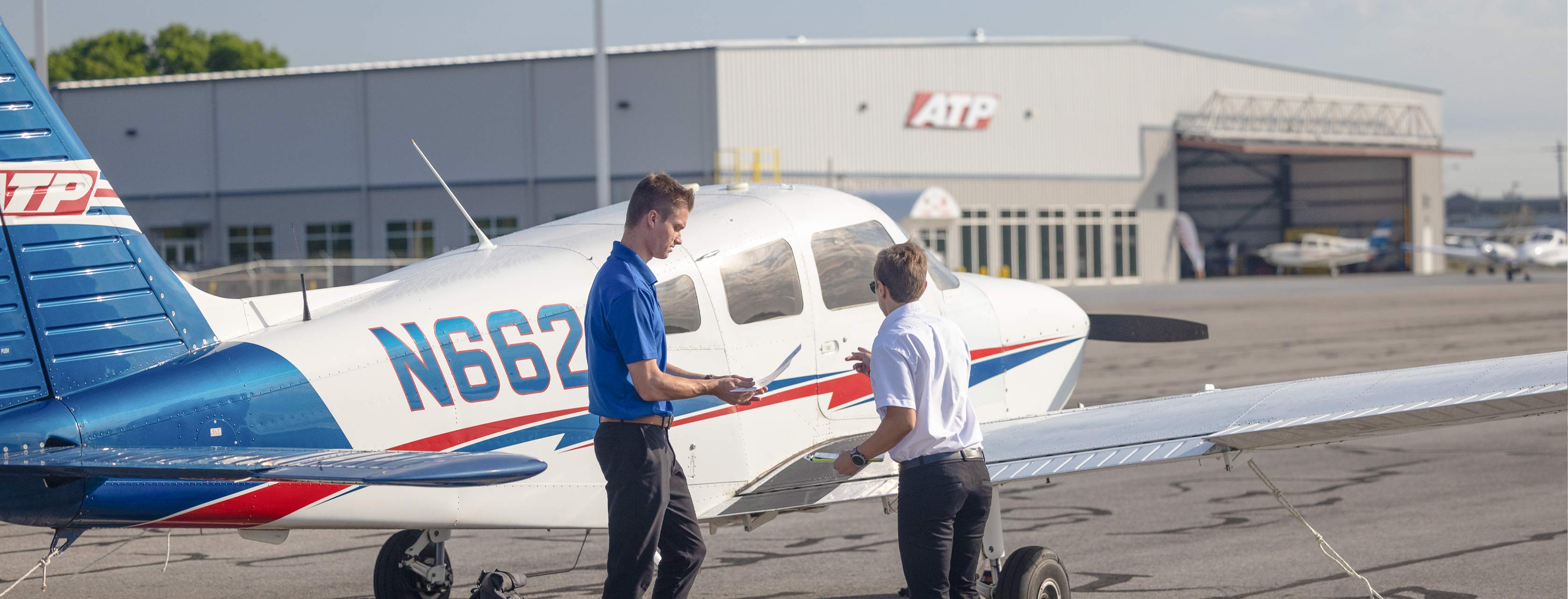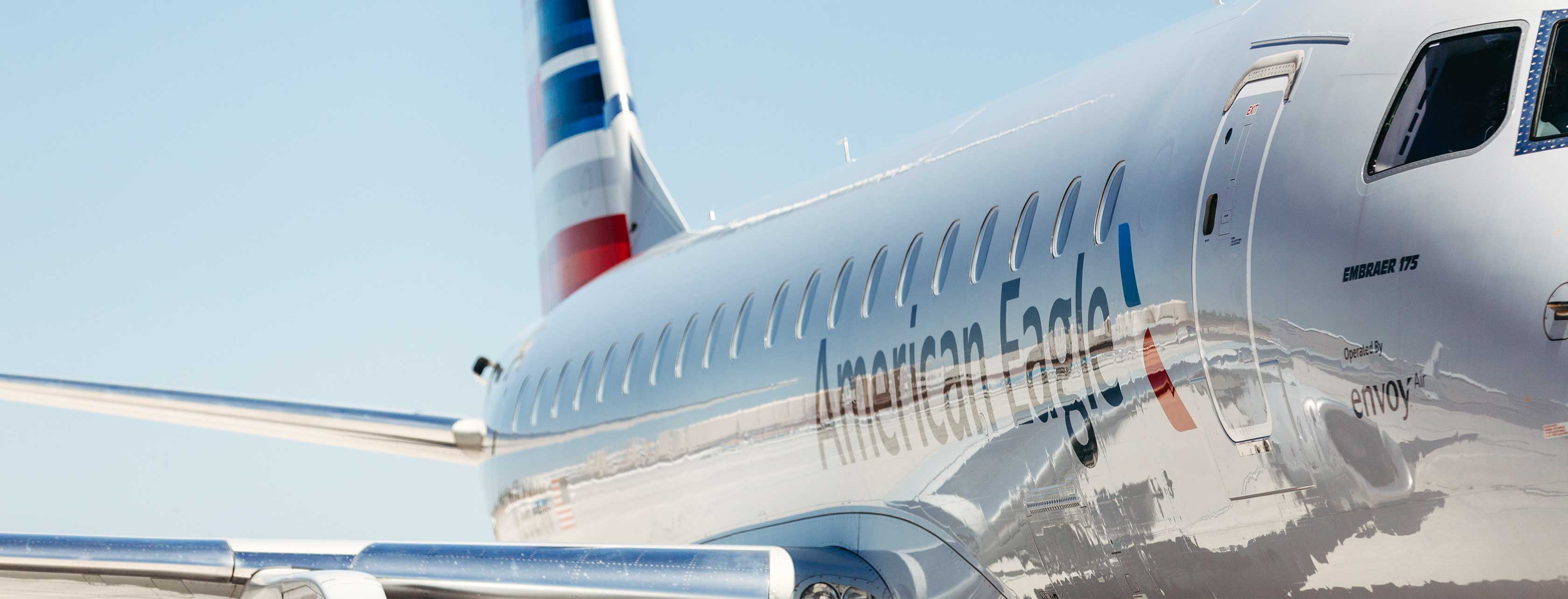A Pilot Applies for Life Insurance : Seeking life insurance needs to reveal occupational risks. Premiums may be higher due to job hazards.
Navigating the complexities of life insurance can be daunting, especially for professionals like pilots, whose careers inherently involve higher risks. Life insurance providers take this into consideration
the unique circumstances of a pilot’s profession, potentially leading to increased premiums to offset the added risk of insuring someone who works in a more dangerous environment.
This occupational hazard is factored into policy assessments, and as such, pilots must be prepared to discuss the nature of their work during the application process. Secure in the knowledge that these
Considerations are critical for providing the right level of coverage. Pilots can approach insurance companies with the required details at hand. Engaging with the right insurer ensures that they receive a policy tailored to their specific needs, maintaining financial security for themselves and their loved ones.

Risk Assessment For Aviators
When a pilot applies for life insurance, providers take a deep dive into the unique risks associated with aviation. Understanding these risks is crucial for insurers to set accurate premiums. Let’s explore the factors they consider.
Unique Job Hazards
Unique Job Hazards
Piloting aircraft comes with specific dangers. Factors that increase risk include flight duration, aircraft type, and flight areas. Let’s break them down:
- Long hours can lead to fatigue.
- Challenging weather tests a pilot’s skill.
- Varied altitudes and speeds affect physical stress.
Aircraft and Flight Safety
Aircraft And Flight Safety
Insurers also review safety records and maintenance practices. Safe, well-maintained aircraft are essential. Here’s what they check:
| Aircraft Type | Main Safety Concerns |
|---|---|
| Commercial jets | Collisions, system failures |
| Private planes | Pilot error, mechanical issues |
| Helicopters | Weather, technical faults |
Precise flight logs and updated training certifications also play a key role in risk assessments.

Life Insurance 101
Welcome to our guide on life insurance, a crucial step for pilots to ensure their loved ones have financial security. Life insurance is not just an investment; it’s a part of responsible family planning and risk management for individuals with high-stakes careers such as aviation. Here, we break down the basics with two essential sections tailored for pilots considering life insurance.
Types Of Life Insurance Policies
Different life insurance policies cater to varied needs. Let’s explore the most common types available:
- Term Life Insurance: Offers coverage for a specific period. It’s popular due to its lower initial cost.
- Whole Life Insurance: This policy lasts a lifetime with fixed premiums, building cash value over time.
- Universal Life Insurance: Offers flexible premiums, with options to adjust death benefits and savings growth.
When selecting a policy, factors such as duration, cost, and cash value growth play significant roles. Pilots often consider a specialized policy due to the nature of their profession.
The Importance Of Disclosures
Honesty is the foundation of any life insurance policy. When applying for insurance, pilots must disclose various details:
| Disclosure Type | Reason for Importance |
|---|---|
| Occupation | Defining risk levels |
| Health status | Calculating premium rates |
| Flying hours | Assessing professional exposure |
Not disclosing these details can lead to policy denial or cancellation. For pilots, specific policies cater to their unique risk profiles and it’s essential to be upfront about all aspects of their career and health.
Understanding life insurance complexities is a major step towards securing peace of mind for pilots and their families. Embarking on this journey with clarity ensures you make informed decisions.
Special Considerations For Pilots
Applying for life insurance as a pilot requires understanding some key factors. Insurers consider various aspects of a pilot’s profession. It is crucial to know these when seeking coverage. Different licenses and experience levels can affect premiums and policy terms.
Evaluating Pilot Licenses And Experience
Insurers will review the type of pilot license held. Licenses range from private to commercial. They also assess the years of experience. This includes training and certifications.
- Private pilots might face higher premiums than commercial pilots.
- Commercial pilots often have more rigorous training.
- Certifications for instrument flying or multi-engine aircraft are favorable.
Flight Hours And Logbooks Analysis
Flight hours indicate a pilot’s actual flying experience. Logbooks provide a detailed record. Insurers meticulously analyze logbooks to understand risk levels.
| Total Flight Hours | Recent Flight Activity | Types of Aircraft |
|---|---|---|
| Shows overall experience | Reflects current proficiency | Indicates specific expertise |
Consistent logging of flight hours can be beneficial. Detailed entries show a pilot’s commitment to safety.
Navigating The Application Process
For pilots, the journey to secure life insurance can seem as challenging as navigating turbulent skies. Understanding the unique steps involved is crucial. A tailored approach eases the process for those with careers in the clouds. This guide provides a route to successfully acquiring insurance coverage.
Getting Accurate Quotes
Gaining an accurate quote for a pilot involves specific considerations. Insurers factor in variables like flying hours and aircraft type.
- Research insurers who understand aviation risks.
- Provide detailed flying history and certification levels.
Use online tools to compare quotes tailored to aviation professionals. This ensures the coverage matches the unique risks pilots face.
The Medical Examination Factor
Life insurance policies for pilots often require a comprehensive medical exam. The exam includes tests that assess overall health and flight readiness.
- Prepare by reviewing personal medical history.
- Expect tests like EKGs and vision assessments.
Good health may lead to better rates and more favorable terms. Address any medical concerns prior to the exam to improve outcomes.
Underwriting Challenges For Pilots
Underwriting Challenges for Pilots become evident as they navigate the complexities of obtaining life insurance tailored to their profession. This unique career possesses inherent risks, which insurers evaluate closely. Understanding the underwriting hurdles is crucial for aviators seeking adequate coverage. Pilots strive for the best premiums, facing terms that reflect their flight ratings and duties.
Insurance Premiums And Pilot Ratings
Life insurance for pilots is not one-size-fits-all. Underwriters consider several factors:
- Flight Hours: Total and recent flight time impact risk assessments.
- Type of Aircraft: Jets, helicopters, or light aircraft differ in risk profiles.
- Flying Areas: Some regions pose higher risks than others.
A commercial airline pilot with regular, monitored routes may enjoy lower premiums than a bush pilot navigating less predictable terrain. Equally, those with higher pilot ratings, indicating advanced training and experience, might benefit from reduced insurance costs.
Common Exclusions And Limitations
Pilot life insurance often includes specific exclusions:
| Exclusion | Description |
|---|---|
| Warfare Activity | Claims related to acts of war are typically not covered. |
| Experimental Aircraft | Flying non-certified or homebuilt planes may be excluded. |
| Extreme Sports | Pilots engaging in risky hobbies like skydiving may face exclusions. |
Limitations also apply to the coverage extent and beneficiaries. Pilots must review policy terms in detail to ensure their needs are met. Engage with knowledgeable agents well-versed in aviation insurance to navigate these complexities.
Choosing The Right Coverage
When a pilot prepares to navigate the skies of life insurance, understanding the landscape of coverage options becomes crucial. A tailored insurance policy can offer financial peace of mind, allowing you to embark on the journey with the right level of protection. Pilots must scrutinize policy features and consider additional riders to ensure their coverage meets the unique demands of their profession.
Comparing Policy Features
Finding the perfect life insurance policy often feels like plotting a course through complex skies. Pilots should focus on key aspects:
- Policy Type: Term life offers coverage for a set period, while whole life extends for a lifetime.
- Payout Amount: This is the sum beneficiaries receive. It should cover living expenses and debts.
- Premium Costs: Regular payments should fit comfortably within a budget without compromising coverage.
It’s essential to compare different providers. Using a table can illustrate the differences clearly:
| Insurance Company | Policy Type | Payout Amount | Premium Cost |
|---|---|---|---|
| Company A | Term | $500,000 | $40/month |
| Company B | Whole | $500,000 | $60/month |
Assessing Need For Riders
A pilot’s life insurance may include extra protection, known as riders. Look at these:
- Accidental Death Benefit: Offers additional payout in case of a fatal accident.
- Waiver of Premium: If a pilot becomes disabled, this rider forgives future premium payments.
- Critical Illness: Pays a lump sum on diagnosis of certain critical illnesses.
Evaluating the need for these riders is crucial. They add an extra layer of security for pilots and their families.
The Impact Of Regulations And Statistics
The Impact of Regulations and Statistics plays a pivotal role when a pilot applies for life insurance. Life insurance companies pay attention to the health and safety norms a pilot must meet. They also consider the data about accidents and incidents. This information can affect a pilot’s insurance policy. Below, we delve into how FAA regulations and industry statistics impact the process.
FAA Regulations On Health
The Federal Aviation Administration (FAA) sets strict health standards. Pilots must meet them to ensure their sharpness in the sky. For life insurance providers, these rules are vital. They look at the pilot’s ability to meet these standards as a sign of their health.
- Regular Medical Examinations: Must pass to keep their license.
- Physical fitness is crucial for safe flight operations.
- Mental Well-being: is essential for decision-making and stress handling.
Accident And Incidence Rates
A pilot’s life insurance rates may factor in the risk from statistics in the aviation industry. Companies use these numbers to estimate the risk of insuring a pilot. data shows the number of accidents and incidents that pilots encounter.
| Flying Hours | Accident Rates | Incident Rates |
|---|---|---|
| 0–100 | Higher | Higher |
| 100 – 1000 | Moderate | Moderate |
| 1000+ | Lower | Lower |
Numerically lower incident rates imply safer flying, which can lead to more favorable insurance premiums. This underscores the importance of experience and safety in aviation for securing better insurance terms.

Success Stories And Cautionary Tales
Every pilot who applies for life insurance has a unique story. Some sail through the underwriting process, while others face turbulence. Success stories inspire. But we learn a lot from those who didn’t quite make it either. Both experiences offer rich lessons for pilots and insurance seekers alike.
Real-life Experiences
Stories abound where pilots successfully secure life insurance.
- John’s Journey: Working as a commercial airline pilot, John feared his application might get declined. But with a clean health record and safe flying history, his application sailed through. Now, he feels secure knowing his family is protected.
- Emma’s Endeavor: As a private plane pilot, Emma took extra precautions. She chose an insurer who understood aviation risks. Her policy came with a premium reflective of her low-risk status, giving her peace of mind.
Learning From Denied Claims
When claims get denied, there is always a lesson to unwrap.
| Claim Issue | Lesson Learned |
|---|---|
| Undisclosed Flying Hours: Mike’s claim was denied after failure to accurately report his flying hours. | Full disclosure is critical. Withholding information can violate your policy. |
| Incorrect Information: Sarah provided incorrect health data. Her claim was not honored. | Accuracy in your application matters. Any misinformation can lead to denial. |
A pilot applies for life insurance brainly
When a pilot applies for life insurance, the process involves specific considerations due to the inherent risks associated with aviation. Insurance companies typically assess the pilot’s flying experience,
the type of aircraft they operate, and their flight frequency. They may also consider whether the pilot flies commercially or recreationally. Pilots often face higher premiums or may be subject to policy
exclusions related to aviation activities. Additionally, they might be required to provide detailed information about their flight training, certifications, and medical history. Despite these additional
steps, obtaining life insurance is crucial for pilots to ensure financial protection for their beneficiaries in the event of an accident.
A pilot applies for life insurance flashcards
When a pilot applies for life insurance, insurance companies evaluate specific risk factors due to the nature of flying. These factors include the pilot’s flight experience, the types of aircraft flown, flight
frequency, and whether the flying is for commercial or recreational purposes. Pilots may encounter higher premiums or policy exclusions related to aviation activities. Insurers often require detailed
information on the pilot’s training, certifications, and medical history. Despite the added scrutiny, obtaining life insurance is essential for pilots to provide financial security for their beneficiaries, ensuring coverage in the event of an aviation-related incident.
Frequently Asked Questions
Can a pilot get life insurance?
Yes, pilots can obtain life insurance. Specialized policies are available to cater to their profession-specific risks.
Can a student pilot pay regular premium costs for her life insurance policy?
Yes, a student pilot can pay regular premium costs for a life insurance policy; however, rates may be higher due to the nature of piloting activities.
Who is the applicant for a life insurance policy?
The applicant of a life insurance policy is the individual who applies for the coverage and is responsible for paying the premiums.
When T Applies For A Life Insurance Policy And Is Told By The Producer?
Upon applying for life insurance, T receives guidance from the producer regarding policy options, benefits, and requirements for coverage. The producer aids T in selecting the appropriate plan and clarifies the application process.
Conclusion
Becoming a policyholder brings peace of mind, especially for pilots facing unique risks. Our post explored the ins and outs of life insurance for aviators. Navigating through terms and choosing the right coverage is key. Remember, a well-structured life insurance plan ensures that financial security soars even during life’s unpredictable turbulence.
Stay safe, fly with confidence, and secure your legacy.

Hello and welcome to HealthcareInsuranceNews.com! I’m Emon Sheikh, and I’m thrilled to be your guide through the intricate world of healthcare insurance.
As a dedicated blog writer focusing on healthcare insurance, I’m passionate about helping individuals navigate the complexities of insurance policies, understand their coverage options, and make informed decisions to protect their health and finances.
With a background in Life Insurance, Travel Insurance, Medical Insurance, Pet Insurance, Students Insurance, Cancer Insurance, I bring a wealth of knowledge and insights to my writing. Through my blog posts, I aim to demystify insurance jargon, provide practical tips, and keep you up-to-date on the latest developments in the healthcare insurance landscape.
Whether you’re a seasoned insurance professional, a healthcare provider, or someone simply seeking guidance on finding the right insurance plan, I’m here to provide valuable information and support. Together, let’s unravel the complexities of healthcare insurance and empower you to take control of your healthcare journey.
Thank you for visiting HealthcareInsuranceNews.com, and I look forward to sharing this journey with you!
Best regards,
Emon Sheikh
